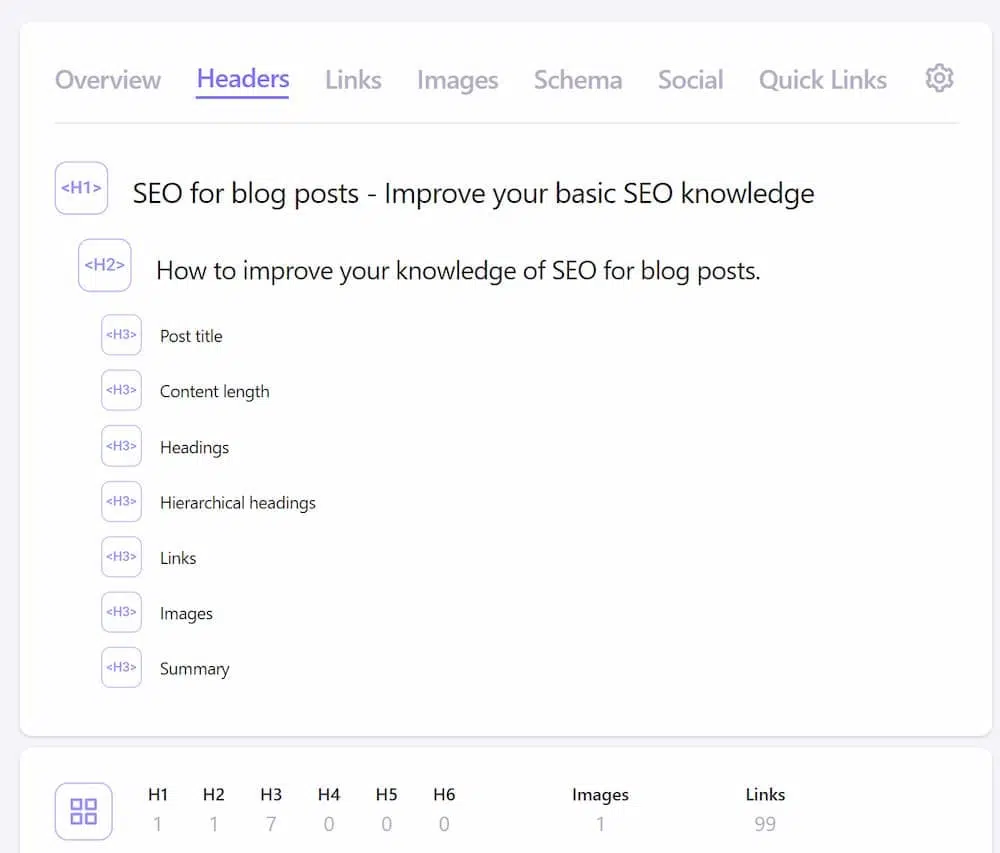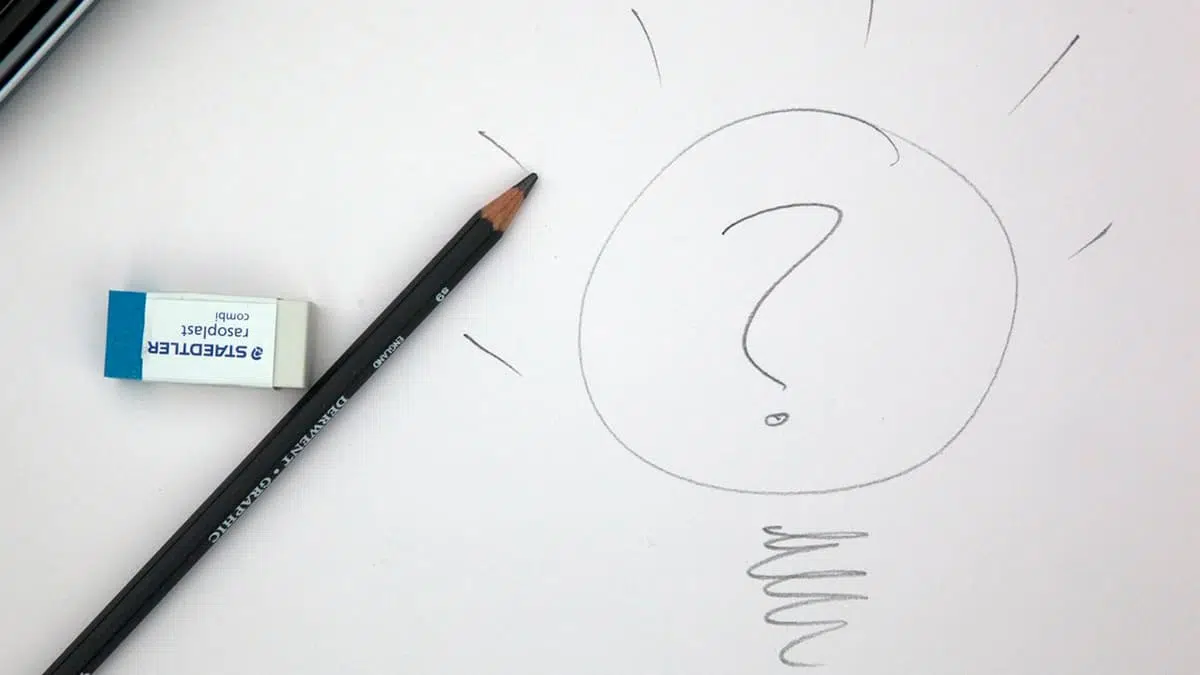Whether you’re new to blogging and are looking for some advice on how to make sure posts rank well on search engines, or you’re a seasoned blogger looking to update their knowledge on how to get the most SEO value out of your blog post, the information below can help you increase your position in the search results and drive more traffic to your website.
SEO for blog posts – what you should be looking at.
Perfect SEO for blog posts is the holy grail for all bloggers. A quick search on Google will show you how many news pages and blog rolls are screaming out for some sort of magic formula.
Do we know the perfect “SEO for blog posts” formula? No, we don’t…
Can we point you in the direction of a few SEO basics that you definitely should be using on your posts? Yes, we can…
The Blog Post Title
There are a few different aspects to consider when writing your blog post title. Ideally, the post title should:
- Contain a unique keyword that you want to rank for and for extra bonus points try to include it at the beginning of the title.
- Generate interest for the reader, after all you want them to click on your post in the search results page!
- Not be too long. Google displays your post title on the search results page and there is a limit to the number of characters that will be displayed. Try to aim for between 50 – 60 characters but if it does end up longer try to make sure that your title still makes sense with the last few words missing.
A good title will help both the reader and Google to understand what your post is about. You may also want to do some quick research to see what other sites have added as their post title to see if you can make yours stand out from the crowd.
Also, it’s worth bearing in mind that plugins such as Yoast will also add your site title to the end of the post title which can easily take you over 60 characters.
The Meta Description
The meta description is the text that sits under the title on the search results page and this is the only place it’ll be displayed to your readers.
There are a couple of important things to consider when writing your meta description:
- Make sure it’s between 120-150 characters, generally anything longer will be cut off.
- Your description should make people want to click through to your article.
The meta description, just like your title on the search results page, is limited in terms of length. In general you want to keep it between 120 and 150 characters so that it displays well on mobile devices and desktops. Sometimes Google slightly increases the length it displays but it’s not something that should be relied on.
Your description should also expand on the headline and give the reader a better idea of what to expect when they click through to your post. If you put something irrelevant into your description you will see people clicking on your post only to leave straight away.
The Length Of Your Content
SEO plugins such as Yoast advise you to make sure your content is at least 300 words and there are a few different reasons for this:
- This amount of content allows you to naturally use your keywords a few times without it becoming repetitive or having to resort to old fashioned keyword stuffing (which doesn’t work anymore!).
- If you struggle to write 300 words about a subject it might not be a subject which is worth covering.
- A rich article with a large amount of content will help Google to understand the topic you’re writing about in greater detail. Generally speaking a longer article with rich content such as images, bullet points and headings has been well written, researched and provides the information the person was looking for, which is what Google wants when it shows your page in the search results.
One thing to keep in mind is not to add content just because Yoast or a similar SEO plugin tells you too. First and foremost you want to keep in mind the person that’s going to be reading your post and then optimise for search engines second. For example, if you’re writing a brownie recipe does the user want to read about where you first discovered the recipe and how to source the finest cocoa beans just so you can tick a box or do they just want to read your recipe and bake the brownies?
The Use Of Headings
Use headings to break up the content of your post, so that readers can skim your post to determine the content.
If your reader can’t make sense of your article from a quick glance, the chances are they will leave the post, head back to the search results and find a different blog post. Headings also help Google to understand the different sections of your post and makes it more likely that you’ll get the featured snippet for your unique keyword. If you have a very long post such as a user guide or step by step instructions it also allows you to create a contents section with jump links that link to the corresponding headings in your post, which is great for user experience.
Hierarchical headings
When we talk about hierarchical headings, we’re referring to the use of H1, H2, H3, H4, H5 and paragraph formatting in the correct order.
Your H1, which is usually your post title, should always contain your keyword – you want Google to assess the topic of your article before anything else and for this information to be flagged as “important”. Your post title is usually your H1 however you may want to double check this, depending on how your website is built and if SEO was taken into consideration during the website build you may find it’s just paragraph text or an H2.
You can check whether your post title is an H1 by using the developer tools built into your desktop web browser or, if you’re not comfortable looking at the HTML code on the page, you can use a browser extension such as the Detailed SEO Extension which shows you how your headings are structured in an easy to understand format. Each post should always have an H1 heading and there should only be one of them per post.

After your H1, the next heading on the page should be H2, and flags this content as the next most important information on the page. Your H2 heading will be the one you tend to use the most through your post to introduce new paragraphs and can be used multiple times in the same post.
Next, look to use H3 headings, these are usually nested inside your H2 headings and can also be used multiple times. For example in your brownie recipe your H2 heading might be the “Method” and your H3 would be Step 1, Step 2, etc. The same is true for your H4 and H5.
It’s important to remember that your headings are there to provide a structure for your blog post, not to style the text.
Links
There are two types of links that you will use on your website, internal links and external links.
- Internal – takes readers to a page/post on your own site
- External – takes readers to a 3rd party site
Internal links take readers to another post or page on your website. This could be for further information or because it’s helpful for the user to also be able to reference that page. Using our brownie recipe as an example, we could add an internal link to a post we’ve written on how to line your baking tray to stop your brownies from sticking.
External links take your reader to a different website. This could be because someone else has written a great article that you’re referencing or to show your readers that you’re sourcing up to date information. Going back to our brownie example you might include a link to Tesco so that people can quickly order the ingredients needed for your recipe.
Both types of links are good to include in your post. Internal links help Google to discover other posts and pages on your website and external links helps Google to discover new websites entirely. Without websites linking internally and externally the web would be very difficult for Google and users to navigate.
Images
When it comes to using images for your post, there are a few important rules to check:
- Does it add anything to your post?
- Does your image have an appropriate title, file name and Alt Text?
- Is your image appropriately sized and in the correct format for the web?
Images are some of the largest files on your website and will have one of the biggest impacts on the loading speed of your blog post. Make sure you’re only adding images that improve the quality of your post for the reader and not just adding images for the sake of it.
An appropriate image title helps search engines such as Google to understand what’s going on in the image and it also appears for your readers when they hover over the image with their mouse.
Alt text is first and foremost for accessibility and for people who are using a screen reader. The alt text describes what’s going on in the image, for example, for the image below you might include the alt text “three people standing outside chatting”. Search engines also make use of this information to understand what the image is showing and this then adds more context to what the content of your post is about, which is why it’s important to use your keyword in the alt text. However, when adding your keyword to the alt text make sure it’s relevant to the image and that you’re not just stuffing your keyword in as this will be confusing for people who are using screen readers.
When adding images to your blog post it’s important to take into consideration image size and format, as large image’s can quickly cause your website to grind to a halt for your readers, especially on a phone using mobile data. Generally, you want to make sure that your images are as small as you can get them without making them look horrible and pixelated, here at Mackman we tend to aim for a maximum of 100kb per image. You can use a tool such as Squoosh which allows you to resize and compress your images at the same time before uploading them to your blog post. It’s also worth paying attention to the format of your image, usually if it’s a photograph style image you want to use the JPEG format and if it’s a drawing or you need a transparent background you’ll want to use a PNG. JPEGs tend to be a lot smaller than PNGs so depending on the image you might want to convert between the two formats, again, Squoosh can help you do this.
SEO For Blog Posts Summary
The six tips that we’ve offered here are a good starting point for perfecting your SEO for blog posts, but good SEO doesn’t stop there. With so many different known and unknown ranking factors it’s impossible to include them all in this post however by making sure you’ve optimised these six elements you’ve set yourself a great foundation to keep building on. If you’re looking to grow your blog audience through SEO and you need some support then get in contact with our team and we can help you grow your blog or website traffic.
